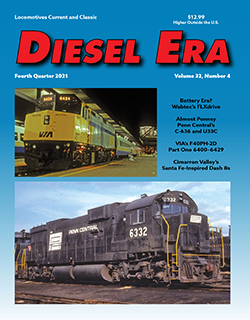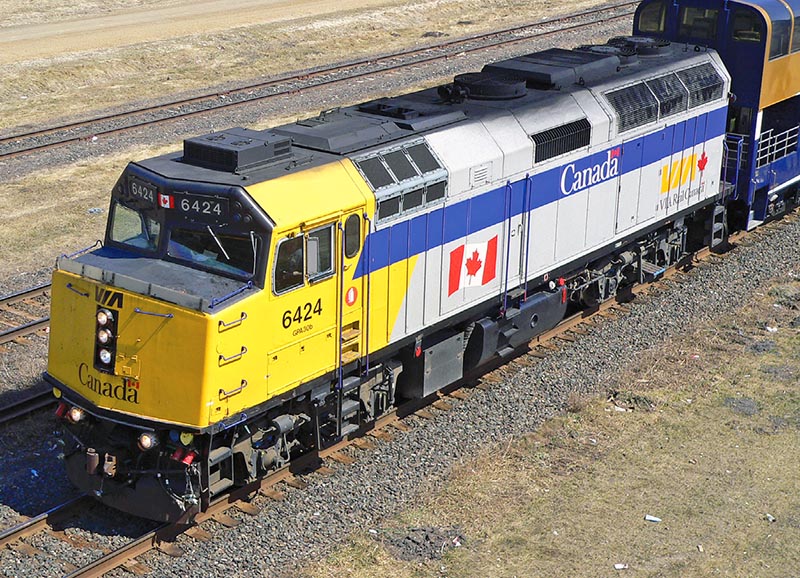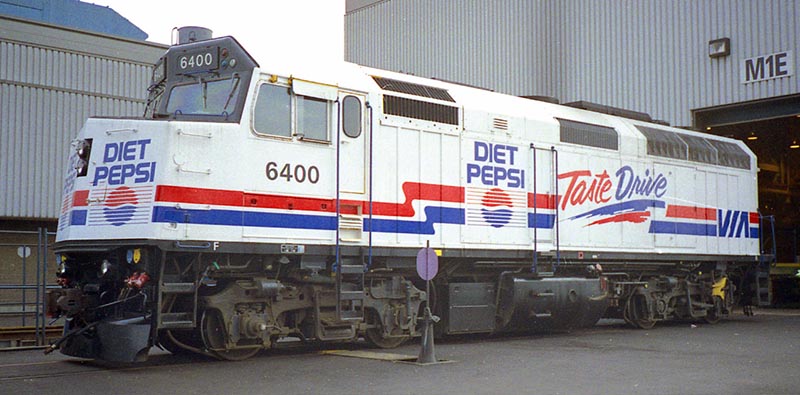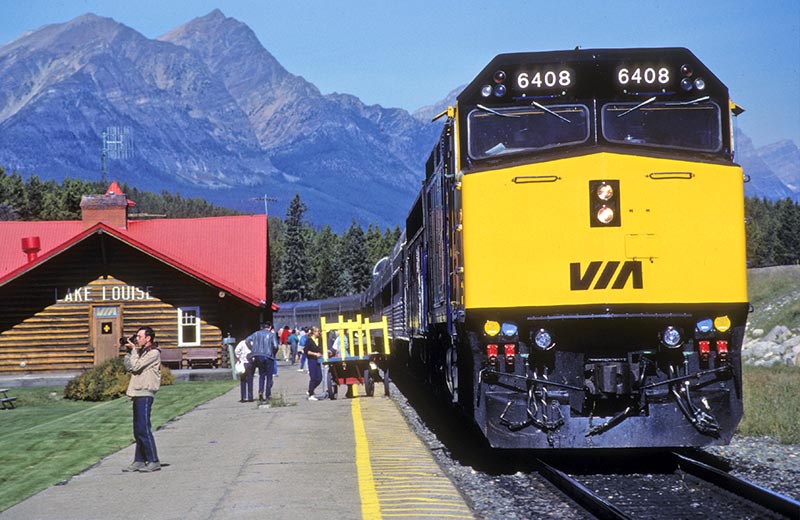 By Manny Jacob with the Diesel Era Staff/photos as noted
By Manny Jacob with the Diesel Era Staff/photos as noted
While Amtrak began its journey with F40PH diesels nearly a decade ahead of VIA Rail Canada, both passenger carriers would use this four-axle GP40-2 variant as a vital motive power option during the 1980s and through the end of the 20th century, plus well into the 21st century in VIA’s case. VIA’s fleet consisted of 59 units (6400–6458) delivered from November 1986 through April 1989 by Canadian subsidiary General Motors Diesel (GMD).

ABOVE: VIA 6424 with a Rocky Mountaineer car behind it was at Portage la Prairie, Man., on April 23, 2011. This roof view shows you the added air conditioner unit, modified air intakes, exhaust silencer, K3 air horn cluster (ahead of the dynamic brake fan), and more. Up front, the unit shows a modified third headlight addition. Note also the revised “VIA Rail Canada” on the rear of the unit as compared to the original plain “VIA” found on most other F40PH-2Ds. —Manny Jacob photo
The units were generally similar to Electro-Motive Division F40PH Phase II examples; however, there are several spotting differences that will be noted in this presentation’s captions. The Canadian cousins to Amtrak and other U.S. F40PHs all possessed turbocharged, 16-cylinder 645 prime movers. VIA’s fleet was rated at 3,000 horsepower and the motor spun at 916 rpm to achieve this output. The “D” in the unit’s F40PH-2D identification refers to the inclusion of a desktop console in the cab. Like other F40PH units, VIA’s included a head end power (HEP) alternator system driven by the prime mover to supply lighting, heating,and air conditioning for passenger car needs. The F40PH standard gearing is listed as 57:20 with ability to achieve 110 mph (177 kmh); gearing on VIA’s fleet is 58:19 with a top speed of 95 mph (153 kmh).

ABOVE: VIA 6427 at Brockville, Ont., in June 1991. —Kevin EuDaly collection
This survey covers about half the fleet (6400–6429) with another installment to follow during 2022 in Diesel Era with the remainder of VIA’s F40PH-2D roster (6430–6458). VIA sorted its F40PH-2Ds into classes based on order deliveries with the first 20 units (6400-6419) making up GPA-30a from late 1986; 10 additional units (6420-6429) from 1987 made up GPA-30b; and the last 29 units (6430-6458) from 1989 are class GPA-30c…

ABOVE: VIA 6400 shows a temporary Diet Pepsi dress at Vancouver, B.C., in May 1990. The F40PH-2D, a steam generator, and several cars were decorated for a TV commercial. All equipment returned to standard livery, and the next VIA unit to see a colorful change like this would be in 1997 with 6429’s Home Hardware wrap. —Mark Forseille photo



